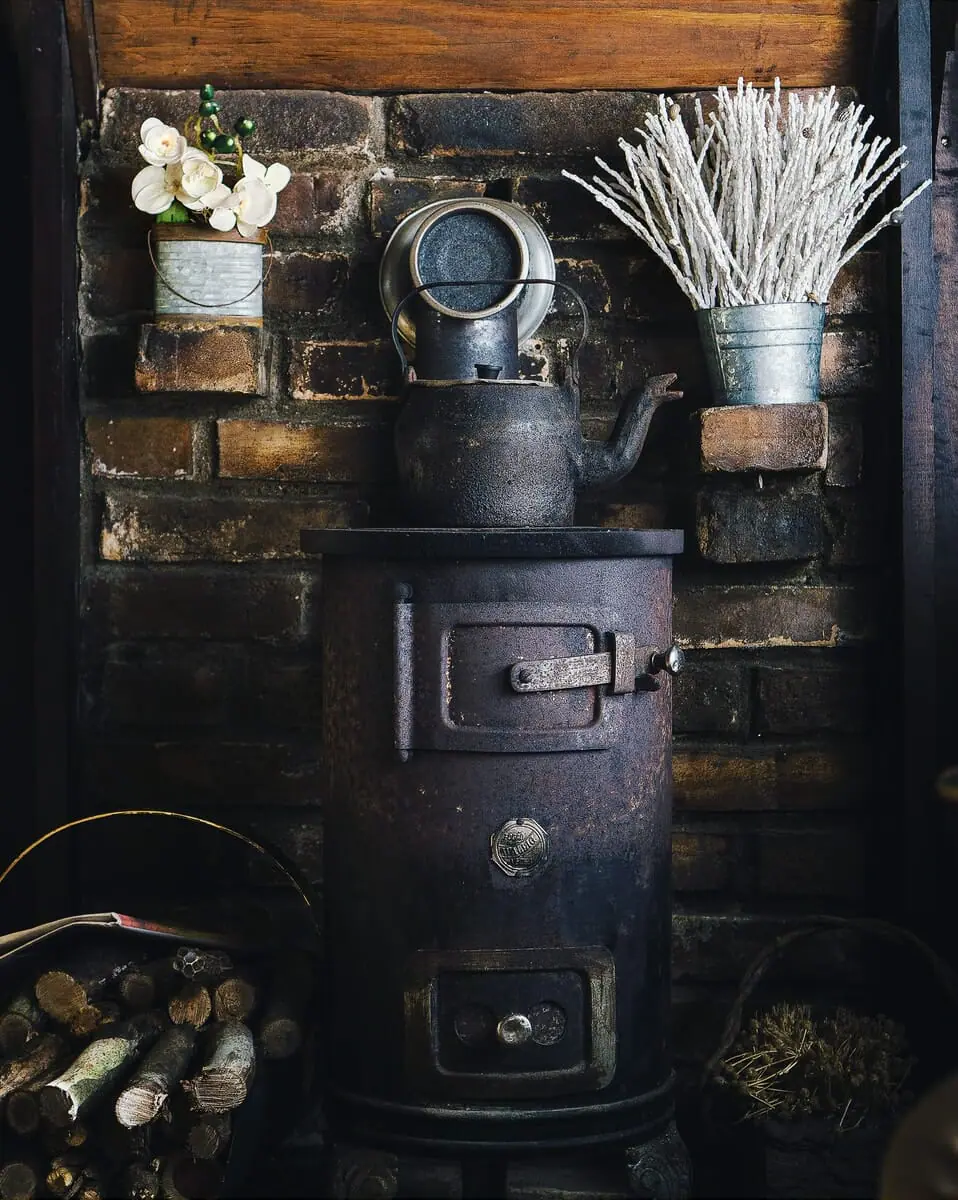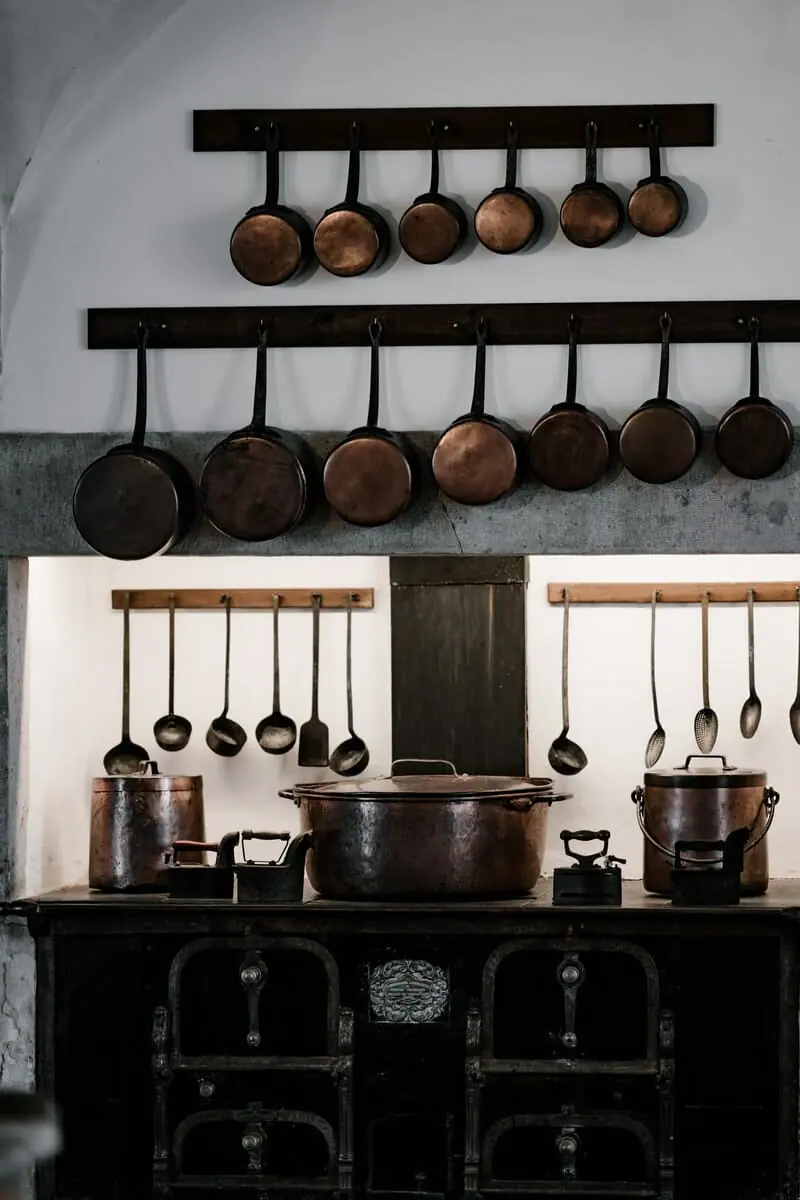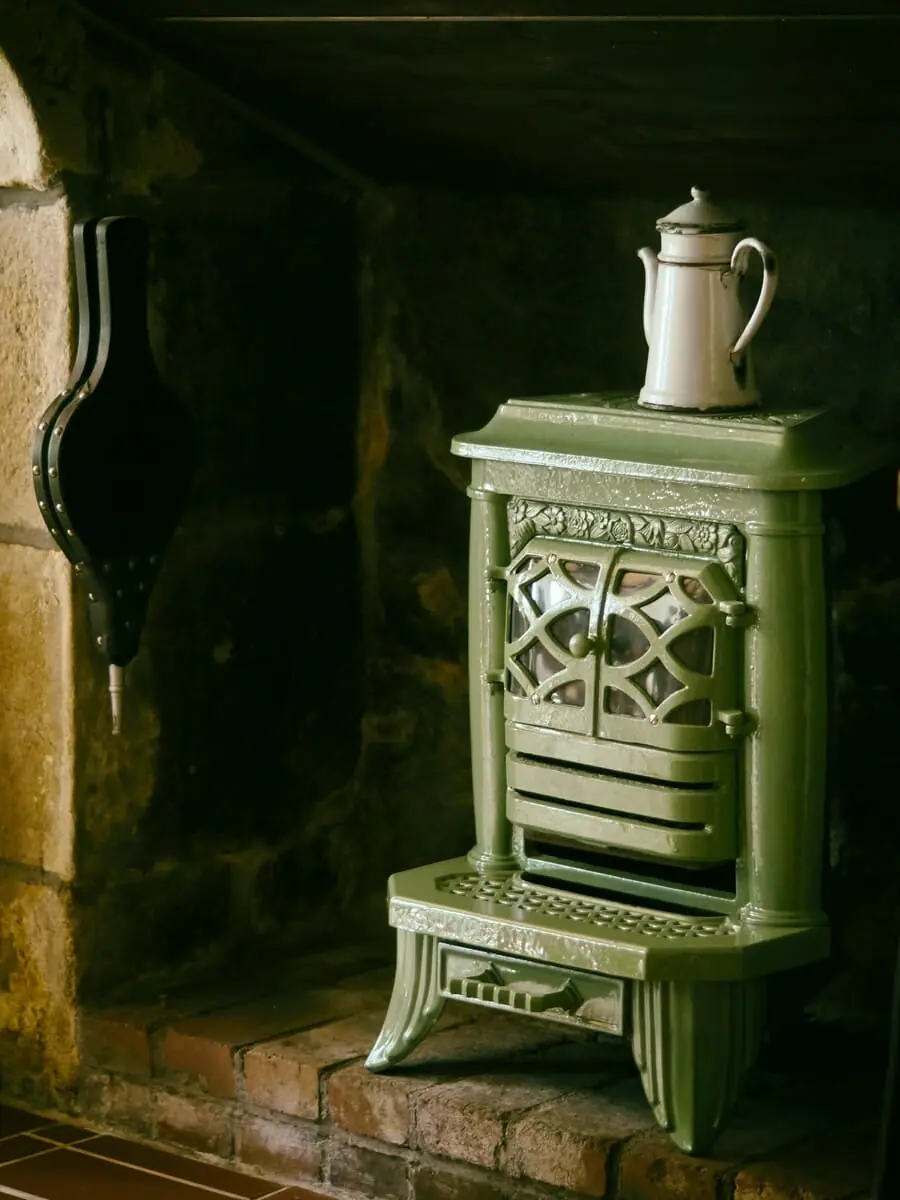- To figure out what stove you have – jump down to our list with pictures (this site also lists out different types)
- You can also look for the stove brand name somewhere (often embossed on the metal of the stove door)- Charter Oak Stove Company, Glenwood, Queen Atlantic, Walker and Pratt, Barstow, Acme are all well-known old-timey stove brands
- Look for a patent number- frequently these stoves will have a patent embossed somewhere. Try looking for a number series, sometimes with the letters “PAT.” You can then look up the patent number online or at the United States Patent Office. Patent info is available for any patent issued after 1790
- Are they valuable? According to LoveToKnow, a range of different antique stoves sold from $300 to $1,250 on auction sites
- Check out RareAntiqueStoves to see some interesting, gorgeous and potentially valuable styles as does 1stdibs
Contents
- Identifying the age of your vintage stove
- How to determine the type of wood stove you have
- Franklin Stoves
- Wood cook stoves
- Cast iron wood-burning stoves
- Soapstone wood stoves
- Ceramic wood stoves
- Pot-bellied stoves
- Parlor stoves
- Eisenglass stoves
- What is an antique stove?
- How to Identify an Antique Wood Stove
- 1. Look for a Cast Iron Body
- 2. Inspect where you find “Made In…”
- 3. Look for a Stovepipe Adapter
- 4. Look for a Draft Door
- 5. Inspect the Doors
- 6. Inspect the Pipes
- 7. Inspect the Chimney
- 8. Inspect the Paint on the Stove
- 9. Look at All of the Parts
- 10. Look at the design of your stove’s legs
- Conclusion
Identifying the age of your vintage stove
Do you know how to identify an antique wood stove? It might be that someone close to you has decided to sell one at their estate sale, or maybe your friend told you about this amazing place that sells old stoves.
If either scenario sounds like something you want to get into, then below are a few tips for identifying certain vintage wood stoves.
How to determine the type of wood stove you have
Here are some common stove types with pictures:
Franklin Stoves
The Franklin stove was a type of antique wood stove created in the 1700s that people don’t use much anymore for safety reasons. It works just like a fireplace insert and usually has hinged doors for adding firewood.
Wood cook stoves
These cooking stoves typically featured burners on the top with a stove box located on the side. Generally they’re made of enameled cast iron.
Cast iron wood-burning stoves
These have a pipe prolonging from the back or top and a door for adding wood.
Soapstone wood stoves
Instead of using metal, these soapstone wood stoves use soapstone and are great at conducting heat.
Ceramic wood stoves
These stoves were popular in the 1800s and incorporate ceramic tiles to help heat the room after the fire goes out.
Pot-bellied stoves
This round-shaped stove usually has a pipe extending up from the top and are frequently built from cast iron.
Parlor stoves
These flowery Victorian stoves are gorgeous to behold. They are generally small and are built to heat up only one or two rooms at a time.
Eisenglass stoves
With these stoves, made from compressed mica, you can watch the fire right through a viewing window. Eisenglass also tends to gradually flake and discolor over time.
What is an antique stove?
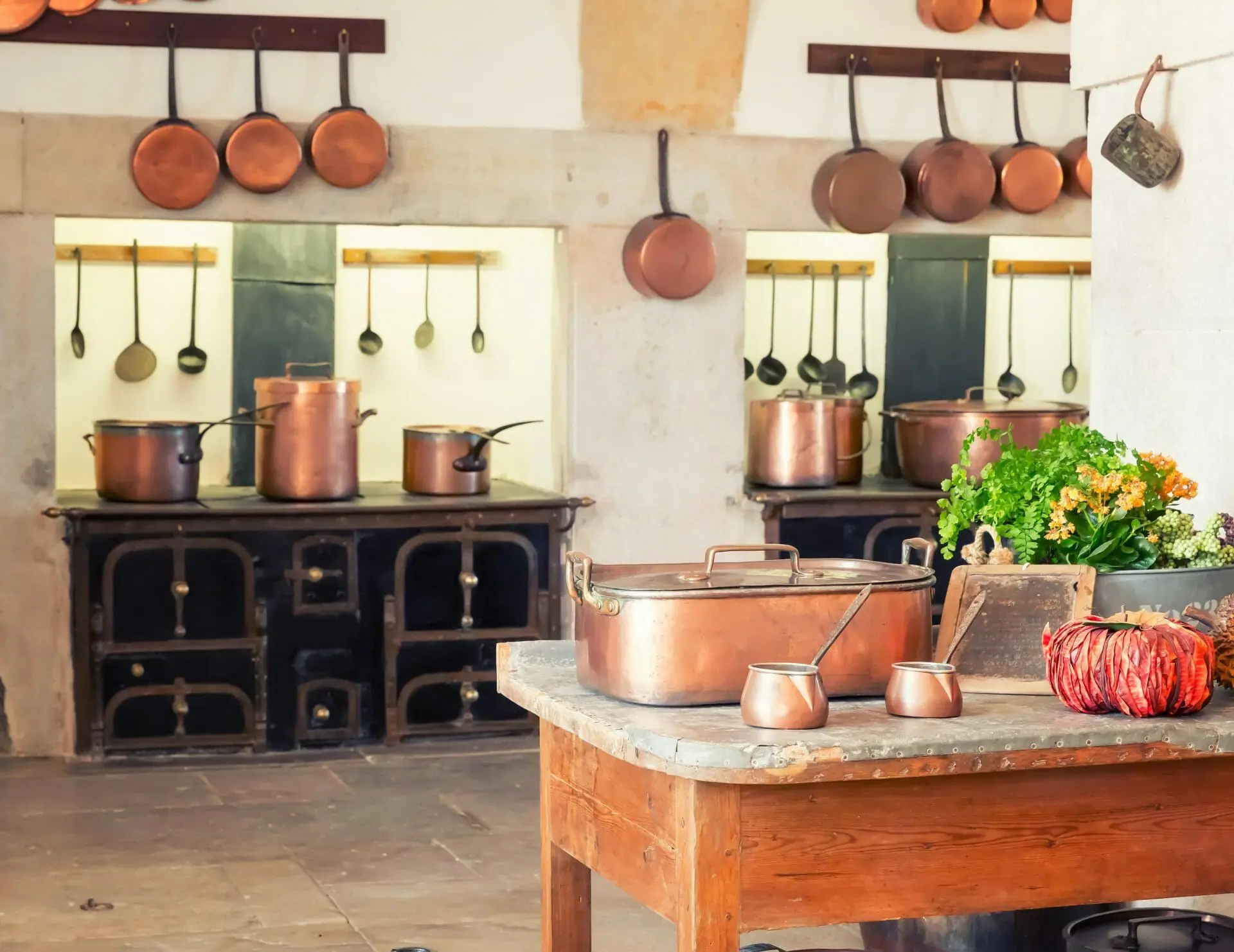
An old style stove is a cast iron stove that was made prior to approximately 1940. They were the primary heat source for the house for many years after that when fuel oil became more accessible, but are still present in many homes today.
How to Identify an Antique Wood Stove
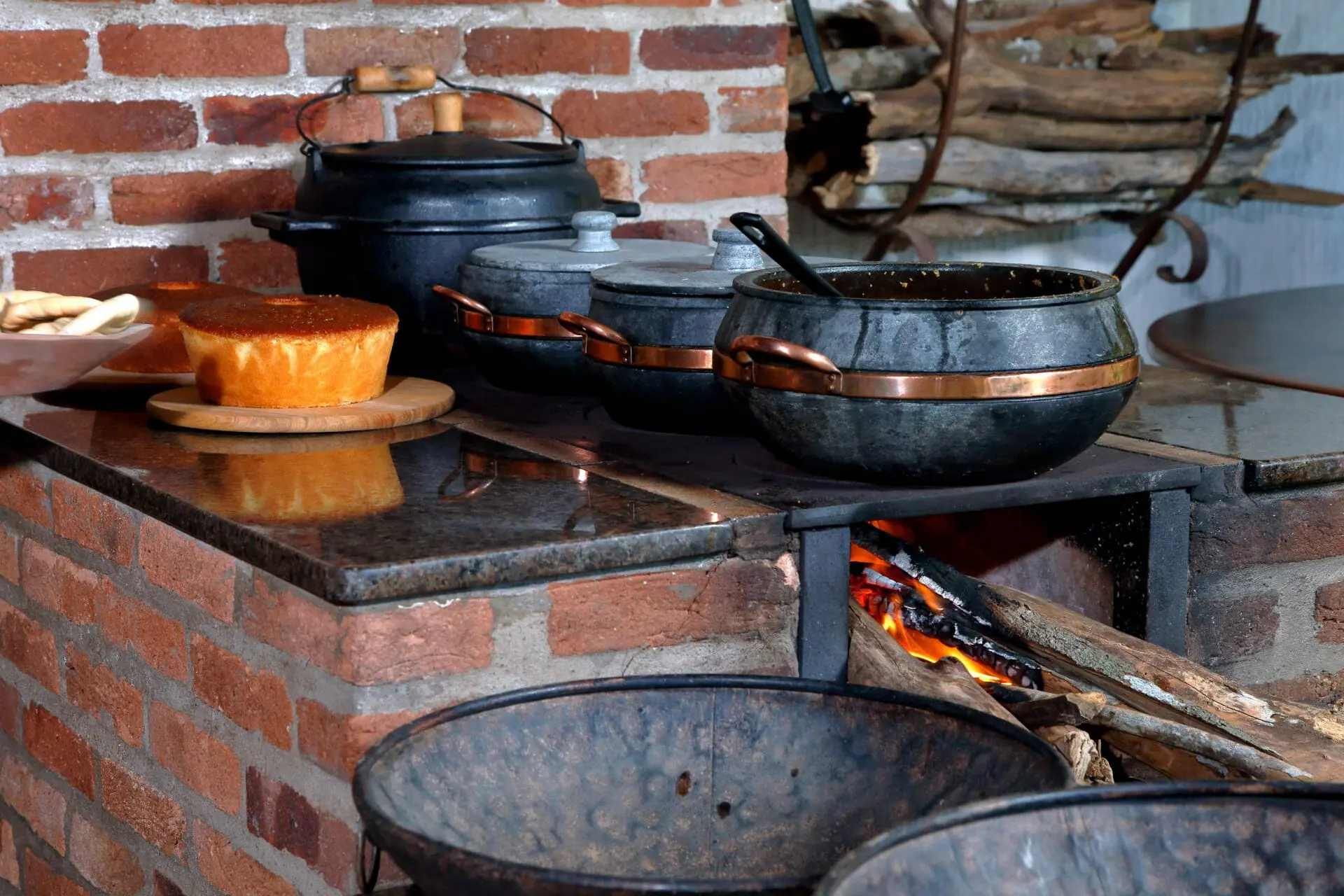
Identifying an antique stove can be tricky if you are unfamiliar with the different styles and made by different companies. There are a few different ways to go about identifying an antique stove, and each is pretty simple.
Below is a list of things you can do in order to figure out if that old stove you found is indeed an antique stove or simply just a really nice fake:
1. Look for a Cast Iron Body
Cast iron will not rust and is made to withstand the elements. Many antique parlor stoves have had the paint stripped away and show patches of cast iron. If you see large patches of cast iron it is probably an antique stove.
2. Inspect where you find “Made In…”
Many stoves were not made in the United States, so if you are told that a stove was Made In America, it won’t be old enough to be an antique.
Aside from that, if the words “Made In…” are painted somewhere on your stove and the paint is newer, it probably isn’t an antique stove.
3. Look for a Stovepipe Adapter
A stovepipe adapter is a piece of metal that is added to a new style of the stove to allow it to fit onto existing piping that was used for an older style of a wood-burning stove. If you look for a pipe and find that it is tapered at the end it is probably a stovepipe adapter.
4. Look for a Draft Door
A draft door is a round door that flips open to adjust the airflow in your antique wood-burning stove. If you see this door and it looks rusted, then you are looking at an antique stove.
5. Inspect the Doors
Look for Latches and Knobs – Each door on an antique stove has a unique look to it. The doorknob should be wood, the knobs should be metal. This can almost be used as a way to tell if your stove is old or not.
6. Inspect the Pipes
On older stoves, there will be two pipes located on either side of the stove that connects to the chimney. Either the pipes or the wood of the stove should be a dark color and there should be no rust showing through.
7. Inspect the Chimney
A chimney is what carries smoke from your fire up through your home and out of your home. The type of heat grate is also an indication of an antique stove. If you have this type of grate then it is most likely an antique stove, as newer stoves don’t have such a grate to allow more heat out to be collected.
8. Inspect the Paint on the Stove
The paint will be black or dark brown. If it is missing, you can see the cast iron underneath.
9. Look at All of the Parts
Most stoves today have all metal parts, but antique kitchen stoves have a combination of both metal and wood parts. If you have an antique stove it will have a few pieces that are made of wood. Keep these tips in mind when looking to buy and sell antique wood-burning stoves.
10. Look at the design of your stove’s legs
On antique stoves, the legs of the stove will be spread out a bit with no obvious bolts or screws around. They are rather “sculpted” legs with a short base. If you see two bolts in the legs of your stove, then it isn’t likely an antique stove.
Conclusion
Determining if you have an antique wood stove is an easy task, but identifying the manufacturer can be a bit harder. The most important piece of identification is the name printed on the stove itself.
If you have a piece of paper with this information, you will be able to confirm whether or not it is indeed an antique wood stove.
